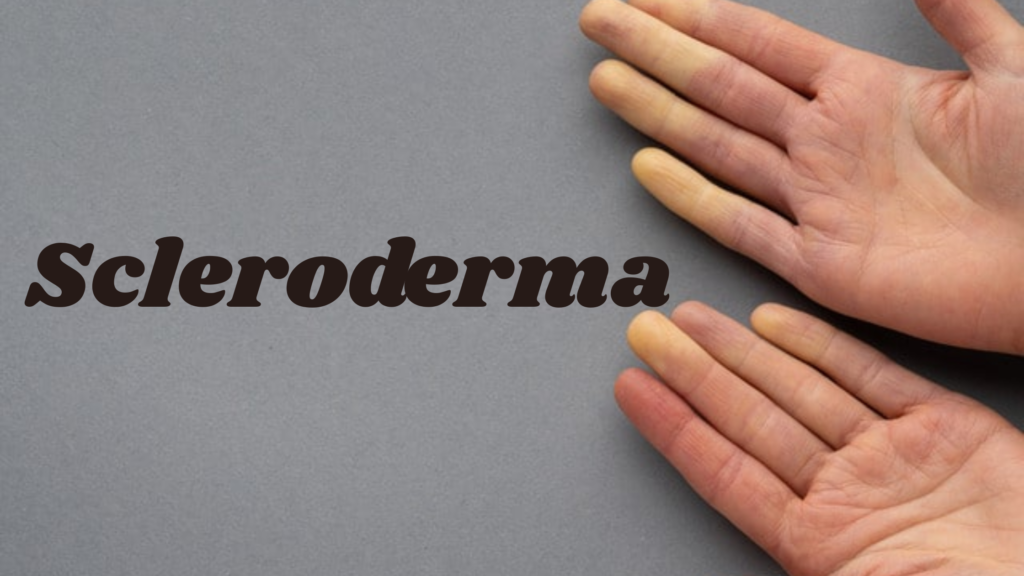🧬 Scleroderma
Scleroderma (also called systemic sclerosis) is a chronic autoimmune connective tissue disease characterized by hardening and tightening of the skin and, in some cases, internal organs. It occurs when the immune system causes excess collagen buildup, leading to fibrosis (scarring).
🔍 Types of Scleroderma
1. Localized Scleroderma
- Affects only the skin and underlying tissues
- Morphea: Oval patches of hard skin
- Linear scleroderma: Affects deeper skin layers, often in a line (can affect limbs or face)
2. Systemic Sclerosis (Systemic Scleroderma)
- Affects skin and internal organs (lungs, kidneys, heart, digestive tract)
- Two main types:
- Limited cutaneous systemic sclerosis (lcSSc): Slower progression, affects skin of hands, face, forearms, and may involve internal organs (often associated with CREST syndrome)
- Diffuse cutaneous systemic sclerosis (dcSSc): More widespread skin thickening, rapid onset, higher risk of internal organ involvement
⚠️ Common Symptoms
- Skin: Thick, tight, shiny skin (especially on hands and face)
- Raynaud’s phenomenon: Often the first sign
- Joint pain and stiffness
- Digestive issues: Acid reflux, difficulty swallowing, bloating
- Lung involvement: Shortness of breath, pulmonary fibrosis
- Kidney involvement: High blood pressure, scleroderma renal crisis (rare but serious)
- Heart problems: Arrhythmias or heart failure (in advanced cases)
🧪 Diagnosis
- Physical exam and history
- Autoantibody tests: ANA, anti-centromere, anti-Scl-70 (topoisomerase I)
- Imaging (e.g., high-resolution CT for lung involvement)
- Organ function tests: Pulmonary function, echocardiogram, kidney tests
🛠️ Treatment
There is no cure, but treatments manage symptoms and complications:
Medications
- Immunosuppressants: Methotrexate, mycophenolate, cyclophosphamide
- Vasodilators: For Raynaud’s and pulmonary hypertension
- Proton pump inhibitors (PPIs): For acid reflux
- ACE inhibitors: For kidney protection
- Biologic therapies: In advanced or resistant cases
Supportive care
- Physical/occupational therapy to maintain mobility
- Skin care and moisturizers to reduce dryness
- Pain and fatigue management
🛡️ Lifestyle
- Dress warmly to manage Raynaud’s
- Eat small, frequent meals to ease GI symptoms
- Avoid smoking and caffeine
- Regular exercise to improve circulation and flexibility
- Monitor organ function regularly with your care team
